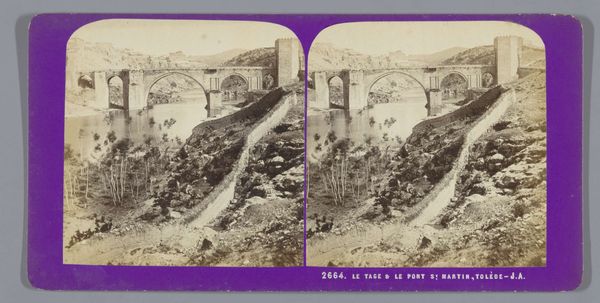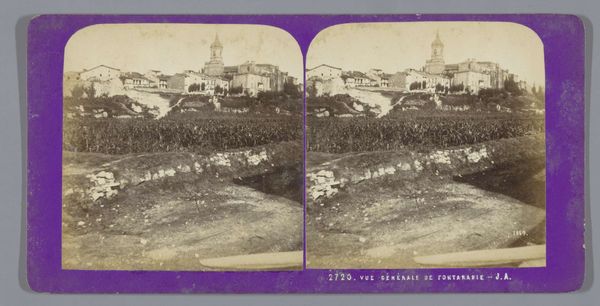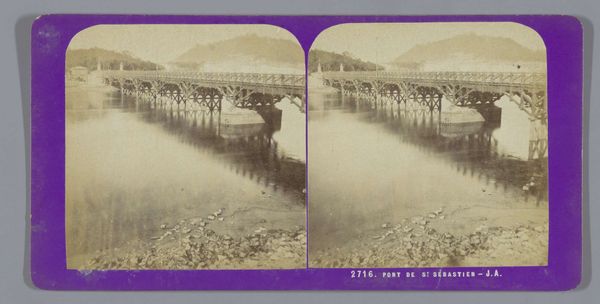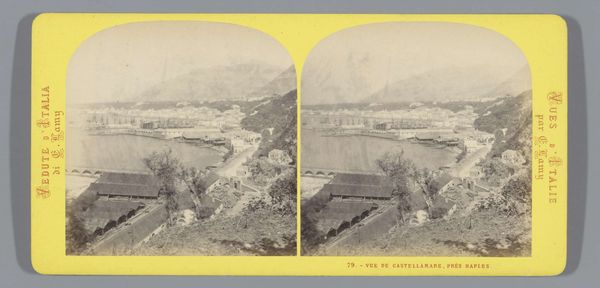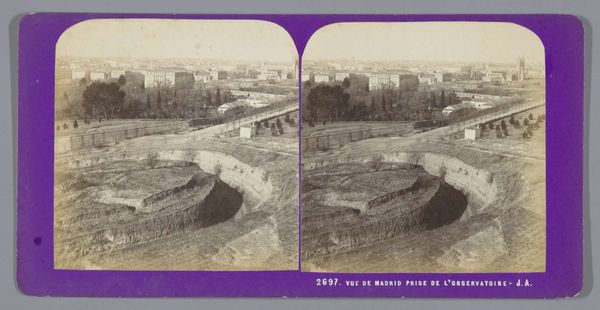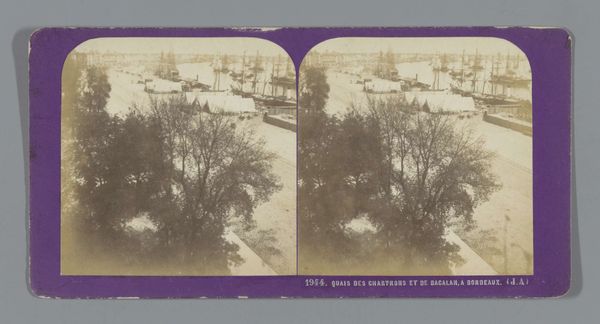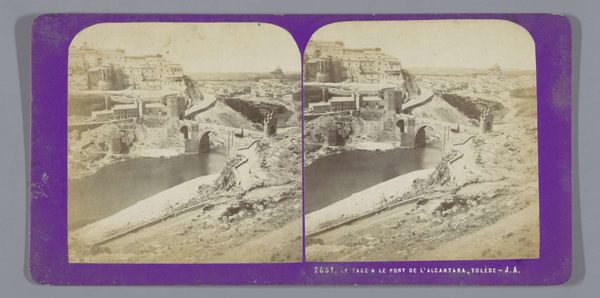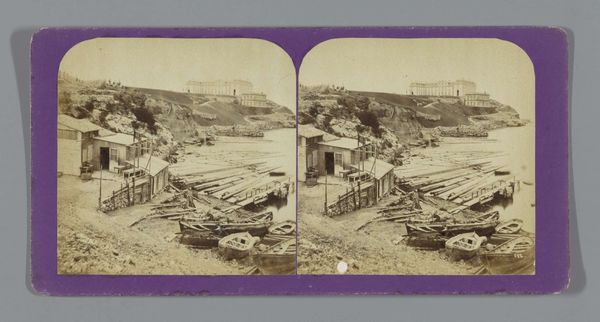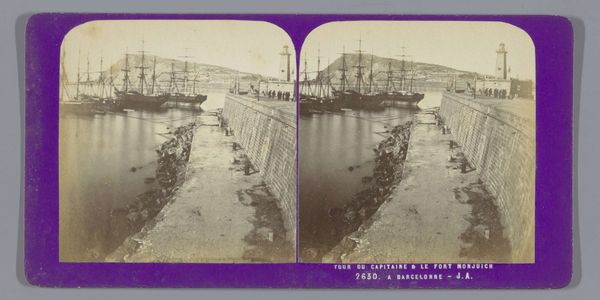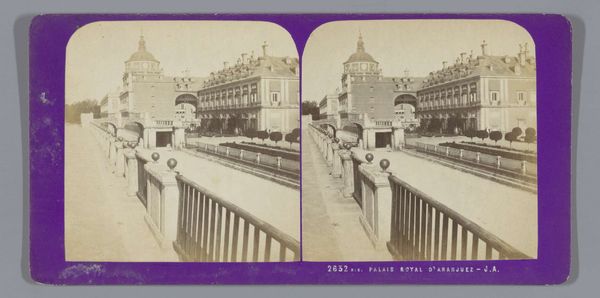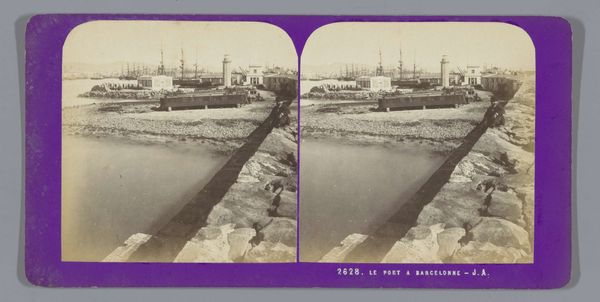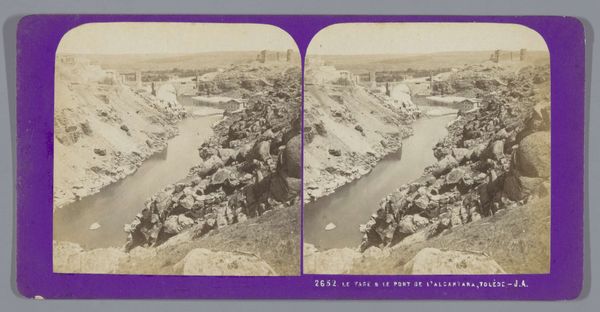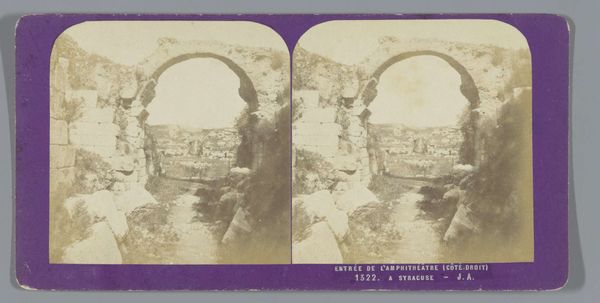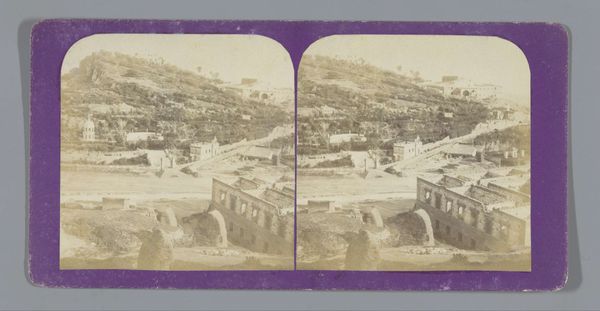
print, daguerreotype, photography
# print
#
landscape
#
daguerreotype
#
photography
#
coloured pencil
#
cityscape
#
building
Dimensions: height 85 mm, width 170 mm
Copyright: Rijks Museum: Open Domain
Curator: This stereo photograph presents a view of the Palacio Real in Madrid, captured sometime between 1862 and 1876 by Jean Andrieu. Editor: It's incredibly detailed. There's a definite starkness in its composition, especially given that the focus is almost exclusively on the building and the tiered landscape. The absence of people gives it an austere feeling. Curator: It's a constructed view, certainly. Early photography like this was as much about portraying power and order as it was about capturing reality. Notice how the Royal Palace dominates the frame, positioned regally above the viewer, representing its societal position. Editor: Absolutely. And look at the materials, how they render—the stone, the trees... You can almost feel the dust in the air and the weight of the palace bearing down. Photography in this period was still so laborious. You're capturing something static but constructed through many hours, much human labor and patience. Curator: Indeed. Daguerreotypes were quite a process. That lengthy exposure time is essential for understanding why there are no bustling crowds; it suggests the deliberate choreography involved in constructing the "ideal" urban scene. It gives the image an air of permanence and authority. The Palacio Real wasn’t simply being depicted, it was being validated. Editor: I wonder about that relationship to validation though, or perhaps a demonstration. It really feels like a geological survey rendered in portraiture: light and dark layered upon each other so many times until an irrefutable edifice becomes visible in toto. So much intention to bring the image into view. And I think in that process, the technique becomes something so beautiful. Curator: That beauty also functions to sanitize the social reality of the period. We are presented with an idealized vision of Madrid, eliding the realities of labor and class tensions prevalent at the time. It's a common visual strategy within nineteenth-century imagery designed to reinforce existing hierarchies. Editor: I can't shake how much handwork makes the finished piece here. All that preparation needed in creating these kinds of photographs! Knowing this process only enhances my reading experience. Curator: This image prompts reflection on photography's role as an artistic and socio-political medium—revealing much more than what initially meets the eye. Editor: A testament to careful labor! And perhaps more subtly, a revelation on how something new appears via what has already existed for such a long time.
Comments
No comments
Be the first to comment and join the conversation on the ultimate creative platform.
